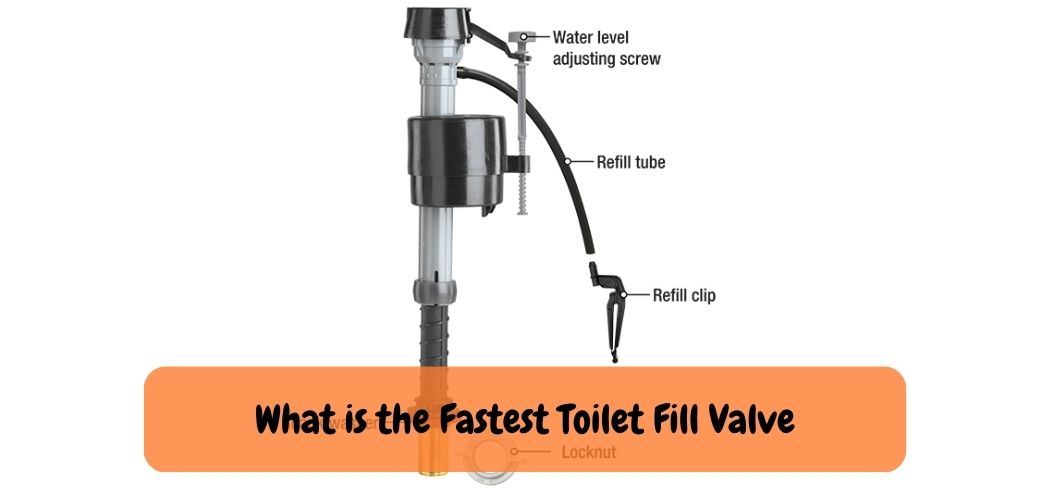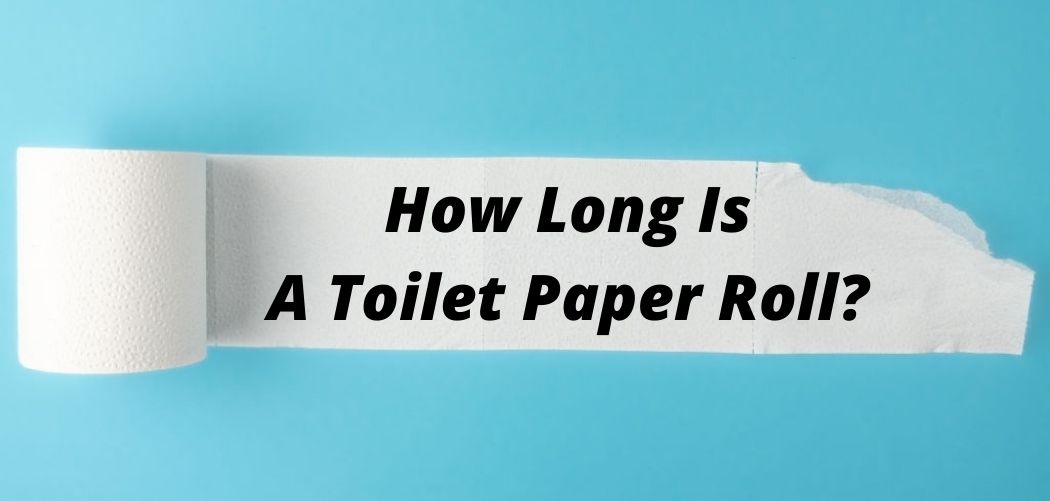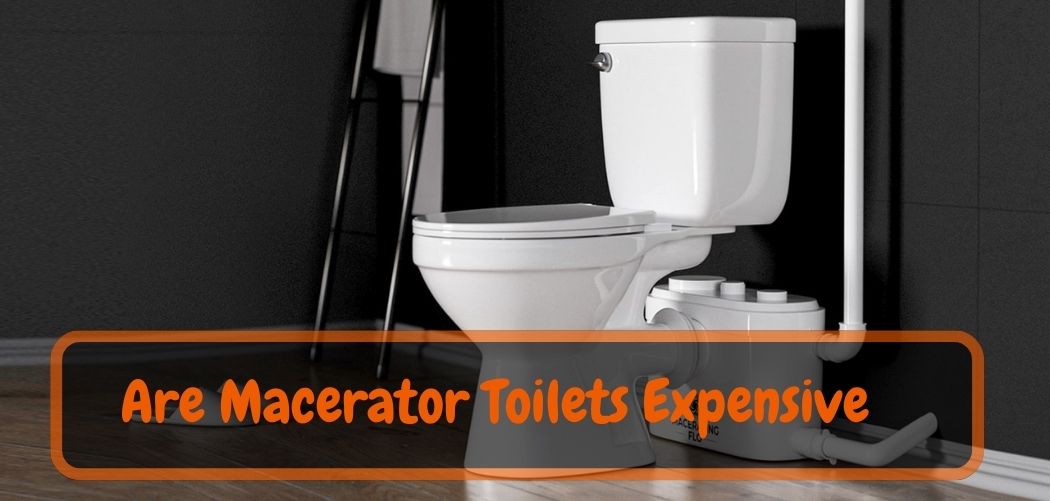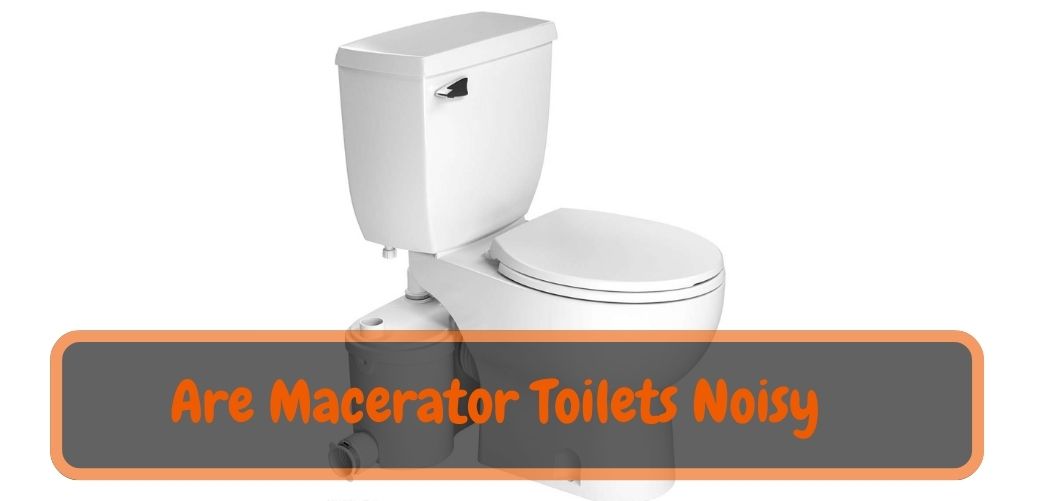The fastest toilet fill valves are designed to quickly refill the toilet tank after flushing. But specific speed may vary among different models and brands.
The speed at which a toilet fill valve refills the tank is vital for several reasons. Primarily, a faster refill time means that the toilet is ready for use again quickly after a flush, enhancing user convenience and satisfaction.
Factors Influencing Fill Speed
- Valve Design: The design of the fill valve plays a significant role in determining its speed. Modern fill valves are designed to provide efficient and swift refilling. Certain designs make it easier for water to go into the tank, so it fills up faster.
- Water Pressure: Water pressure from the main supply directly affects the speed at which the fill valve can fill the tank. Higher water pressure enables a faster flow of water into the tank, resulting in a quicker refill. It’s important to know that water pressure can vary in your area. This can affect how quickly the fill valve works.
- Valve Opening Size: The size of the valve opening or port through which water flows into the tank also influences the refill speed. A bigger valve lets more water flow into the tank quickly, making it refill faster.
- Inlet Tube Size: The diameter and length of the inlet tube connected to the fill valve can affect fill speed. A wider and shorter inlet tube can facilitate faster water flow compared to a narrow or longer tube.
- Valve Material and Internal Mechanism: The material and internal mechanism of the fill valve can impact its efficiency and speed. High-quality materials and well-designed internal components ensure smooth operation and quicker water flow.
Benefits of a Fast-Filling Toilet Fill Valve
- Efficiency: A faster fill valve helps maintain the efficiency of the toilet by ensuring that it’s ready for the next use promptly. This is particularly important in busy households or commercial settings with high traffic.
- Water Conservation: By refilling the tank quickly, a fast-fill valve reduces the time water is running, contributing to water conservation. This aligns with efforts to promote sustainability and reduce water wastage.
- Improved User Experience: Quicker refill times enhance the overall user experience, providing a more seamless and convenient toilet usage.
For the best toilet efficiency and performance, pick a fill valve with the correct speed. When choosing a fill valve, think about how it's made, if it works with your water pressure, and its size. When you do this, the tank will fill up fast and efficiently, improving your toilet experience.
Important Information Related to Fastest Toilet Fill Valve
Toilets are very important in our daily lives. Their efficiency depends on different parts, like the fill valve. After you flush the toilet, the fill valve controls how much water goes into the tank. In this blog post, we’ll explore fastest toilet fill valves. Let’s find the best ways to make your toilet work faster and better.
What is a Toilet Fill Valves?
Toilet fill valves control how water flows into the tank after flushing. Their primary role is to refill the tank to a predetermined water level for the next flush. There are various kinds of fill valves, such as ballcock, float cup, and floatless fill valves. Each type has its own features and mechanisms.
How Dose a Fastest Toilet Fill Valve Work?
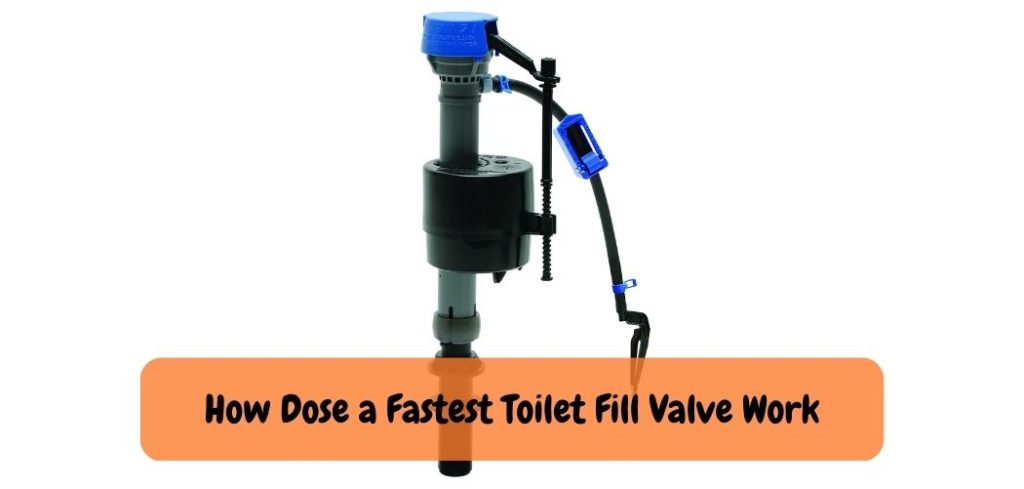
A fastest toilet fill valve, also known as a fast-fill valve, is a plumbing component that controls the flow of water into the toilet tank after a flush. Compared to standard fill valves, fast-fill valves are designed to allow water to enter the tank more quickly, resulting in a shorter refill time.
The inner workings of a fast-fill valve can vary depending on the specific model and manufacturer. However, most fast-fill valves utilize either a pressure-assisted system or a float valve system to regulate water flow.
In a pressure-assisted system:
A small tank of compressed air is used to propel water into the toilet tank at a high pressure, allowing it to fill up more quickly than a standard gravity-fed system. This type of fast-fill valve is commonly found in commercial or high-traffic bathrooms where quick flush and refill times are crucial.
In a float valve system:
A float mechanism is used to detect the water level in the tank and trigger the valve to open or close accordingly. Fast-fill float valves typically feature a larger float or an adjustable float that allows more water to flow into the tank at a faster rate.
Regardless of the type of system used, fast-fill valves are designed to be easy to install and replace. Many models are compatible with a variety of toilet brands and can be adjusted to suit the specific water pressure and flow rate of the building’s plumbing system.
Factors to Consider When Choosing a Fastest Toilet Fill Valve
Here is a table for factors to consider when choosing the fastest toilet fill valve:
| Factor | Description | Importance |
|---|---|---|
| Water Flow Rate | Determines the speed at which the tank refills after flushing; higher flow rates are faster. | High |
| Valve Type | Types include diaphragm, float, and piston valves; diaphragm valves often provide faster filling. | High |
| Material and Durability | Quality materials like corrosion-resistant metals ensure longevity and consistent performance. | High |
| Ease of Installation | Simplifies the installation process, reducing the time and effort required for setup. | Medium |
| Noise Level | Affects user comfort; quieter valves provide a better overall experience. | Medium |
| Adjustability and Compatibility | Ability to adjust water levels and compatibility with different toilet models for optimal performance. | Medium |
| Brand Reputation and Reviews | Trustworthy brands with positive reviews often indicate reliable and efficient fill valves. | Medium |
| Maintenance Requirements | Low maintenance valves save time and effort over the long term. | Low |
| Price | Balancing affordability with quality and performance to suit budget constraints. | Low |
| Water Efficiency | Eco-friendly valves that use less water without compromising fill speed. | Low |
Selecting the right fill valve for your toilet involves considering above factors. You should check the water pressure, the fill valve compatibility, and the installation process. Additionally, take into account any specific performance requirements your toilet may have.
Which Toilet Fill Valve Do I Need?
The type of toilet fill valve you need will depend on several factors, including the specific requirements of your toilet, your water pressure, and your personal preferences. Here are some common types of toilet fill valves and factors to consider when selecting one:
- Ballcock Fill Valve: These are traditional fill valves that use a floating ball attached to an arm to control the water level in the tank. Ballcock valves are less common in modern toilets but can still be found in older models.
- Float Cup Fill Valve: Float cup fill valves are a more modern and efficient option. They use a floating cup instead of a ball to control the water level. These valves are generally adjustable and can be easily fine-tuned to the desired water level.
- Pressure-Assisted Fill Valve: Some high-efficiency toilets use pressure-assisted fill valves. These valves are designed to work with toilets that have a pressure-assisted flush system. They are less common in residential settings and more common in commercial applications.
- Dual Flush Valve: Dual flush valves are used in toilets with dual flush systems, which offer a choice between a partial flush for liquid waste and a full flush for solid waste. The valve you choose will depend on the specific dual flush system installed in your toilet.
When selecting a fill valve, consider the following factors:
- Toilet Model: Check your toilet’s user manual or look for any markings on the existing fill valve to determine the type of valve it uses. This will help you choose a compatible replacement.
- Water Pressure: Consider your home’s water pressure. Some fill valves are design for low-pressure systems, while others are suitable for high-pressure systems. Choose a fill valve that matches your water pressure to ensure proper functioning.
- Adjustability: Look for a fill valve that is adjustable so you can control the water level in your toilet tank. This allows you to optimize water usage.
- Quiet Operation: If noise is a concern, consider a fill valve that is design for quiet operation. Some modern fill valves are engineered to reduce noise during the filling process.
- Water Efficiency: If you’re interested in water conservation, choose a fill valve that is design to water-efficient and compliant with local regulations regarding water usage.
- Ease of Installation: Some fill valves are easier to install than others. If you plan to replace the fill valve yourself, look for one with clear installation instructions and consider your DIY skills.
It's a good idea to consult the manufacturer's guidelines for your specific toilet model and, if needed, seek advice from a plumbing professional to ensure you select the right fill valve for your toilet and have it installed correctly.
How to Make Your Toilet Fill Up Faster?
To make your toilet fill up faster, you can try different methods. However, be careful because messing with the water flow can cause problems if not done right. The fill time of a toilet is typically controlled by the fill valve, so here are some steps you can take:
- Check for Blockages: Before making any adjustments, ensure that there are no blockages in the water supply line or the fill valve. If there are obstructions, this could slow down the filling process.
- Adjust the Fill Valve: Most toilets have a fill valve, which is a component that controls the water flow into the tank. You can try adjusting the fill valve to increase the flow rate:
- Raise the Float Arm: Inside the toilet tank, there is a float arm connected to the fill valve.
- Turn the Adjustment Screw: Some fill valves have an adjustment screw that allows you to control the water level in the tank.
- Replace the Fill Valve: If adjusting the fill valve doesn’t provide the desired results or if the fill valve is old and worn out, consider replacing it with a newer, more efficient model. Many modern fill valves are designed to fill tanks more quickly and quietly.
- Check Water Pressure: Ensure that your home’s water pressure is adequate. Low water pressure can result in a slower fill rate. If you suspect low water pressure is the issue, you may need to consult a plumber to address it.
- Clean or Replace the Water Supply Line: Sometimes, a clogged or deteriorated water supply line can restrict water flow. Inspect the supply line and replace it if necessary.
- Consider a Dual Flush System: If you’re looking for a more eco-friendly solution, you might consider installing a dual flush system. You can use one option to flush liquid waste and another option to flush solid waste. This can save water.
If you mess with plumbing fixtures, it can cause problems or waste water if not done right. If you're not sure how to make changes, ask a plumber to check your toilet. This will help it work well and not waste water. When you adjust your toilet's fill rate, keep in mind the rules about water in your area.
How Fast Does a Toilet Refill?
The speed at which a toilet refills its tank can vary. It depends on factors like water pressure, fill valve design, and water supply line size.
On average, a toilet tank can take anywhere from 2 to 3 minutes to refill after flushing. However, the refill time can vary based on these factors, so the estimate is not exact.
- Water Pressure: Higher water pressure can result in a faster fill time, while lower water pressure can slow it down. If you have low water pressure in your home, it may take longer for your toilet tank to refill.
- Fill Valve Design: The design of the fill valve can affect the fill speed. Some newer toilets have fill valves that refill the tank faster and use less water.
- Water Supply Line Size: The size of the water supply line that connects your toilet to the water source can influence the fill rate. A larger supply line can allow more water to flow into the tank, speeding up the refill process.
- Obstructions: Any obstructions in the water supply line or the fill valve can slow down the fill rate. Make sure there are no blockages in the plumbing.
- Regulatory Devices: In some regions, water-saving regulations require toilets to use specific flow restrictors or fill valves, which can affect the speed of tank refilling to conserve water.
- Condition of Plumbing: The condition of your home’s plumbing can also impact the fill rate. Older or deteriorated plumbing may not perform as efficiently as newer systems.
If your toilet takes longer to refill or consistently takes an unusually long time, it could be a problem. The tank fills slowly for three reasons. The valves are blocked. The shut-off valves are partly closed. The water pressure is low. If you think something is wrong, it's smart to have a plumber check and fix any problems. That way, your toilet will work well.
FAQ on Fastest Toilet Fill Valve and Fluidmaster Performax Fill Valve:
Q1. What is the fastest toilet fill valve or flush valve?
After you flush the toilet, the fill valve or flush valve is what controls the water flow into the tank. It’s the fastest one. The design makes refilling the tank for the next flush faster. This saves water and reduces waiting time.
Q2. What is a high-flow toilet fill valve?
A high-flow toilet fill valve lets more water flow into the tank, refilling it faster after a flush. This design optimizes the toilet’s flushing performance, especially in toilets with larger tanks.
Q3. How do I determine which toilet fill valve I need?
When selecting a toilet fill valve, think about the toilet’s model, tank size, design, water pressure, and desired water efficiency. To pick the right fill valve, read the toilet manual or ask a plumber for advice.
Q4. How do I troubleshoot a Fluidmaster Performax fill valve?
To fix a Fluidmaster Performax fill valve, look for water leaks, slow refilling, or odd noises. To solve problems, ensure correct installation, check for blockages, and inspect for damage. Adjust the water level if needed. Refer to the Fluidmaster Performax fill valve manual for specific troubleshooting steps.
Q5. What is a Fluidmaster Performax flush valve repair kit?
The Fluidmaster Performax repair kit has parts that can fix or improve how the flush valve works. To fix the flush valve, you might need a new flapper, gasket, bolts, and other parts.
Q6. How do I perform a manual adjustment on a Fluidmaster Performax high refill?
To manually adjust a Fluidmaster Performax high refill, follow these steps:
- Locate the Water Level Adjustment Dial: The adjustment dial is usually on top of the valve, indicating the water level.
- Rotate the Dial: Turn the dial clockwise to increase the water level or counterclockwise to decrease it.
- Test and Adjust: Flush the toilet and observe the water level. Keep adjusting the water level until it flushes effectively.
To adjust the Fluidmaster Performax fill valve, look at the manual. It has instructions and pictures.
Q7. How Long Should It Take for a 1.6 Gallon Toilet to Refill?
Assuming you’re talking about a 1.6 gallon toilet tank, it should take around 8-12 seconds for the entire tank to refill. This is based on the fact that most toilets have a fill valve that releases water at 2 gallons per minute.
Q8. What is a toilet water valve?
A toilet water valve, also known as a fill valve or ballcock, is a device that controls the flow of water into the toilet tank. It regulates the water level in the tank after flushing, ensuring the toilet is ready for the next use.
Conclusion
In conclusion, a fastest toilet fill valve is an essential plumbing component that can significantly reduce the refill time of a toilet tank. Whether you’re dealing with a high-traffic bathroom or simply looking for a more efficient toilet, a fast-fill valve is a worthwhile investment.
By understanding the different types and features available, you can choose the best option to suit your needs and improve the overall functionality of your bathroom.
Remember to consider factors such as compatibility, water pressure, and flow rate when selecting a fast-fill valve. With the right choice, you can enjoy a faster, more convenient toilet experience for years to come.
Don’t wait any longer! Get a faster toilet fill valve now for a smoother and more efficient toilet experience. A quick refill means you can get back to what matters without unnecessary delays. Act now for a better bathroom routine!


